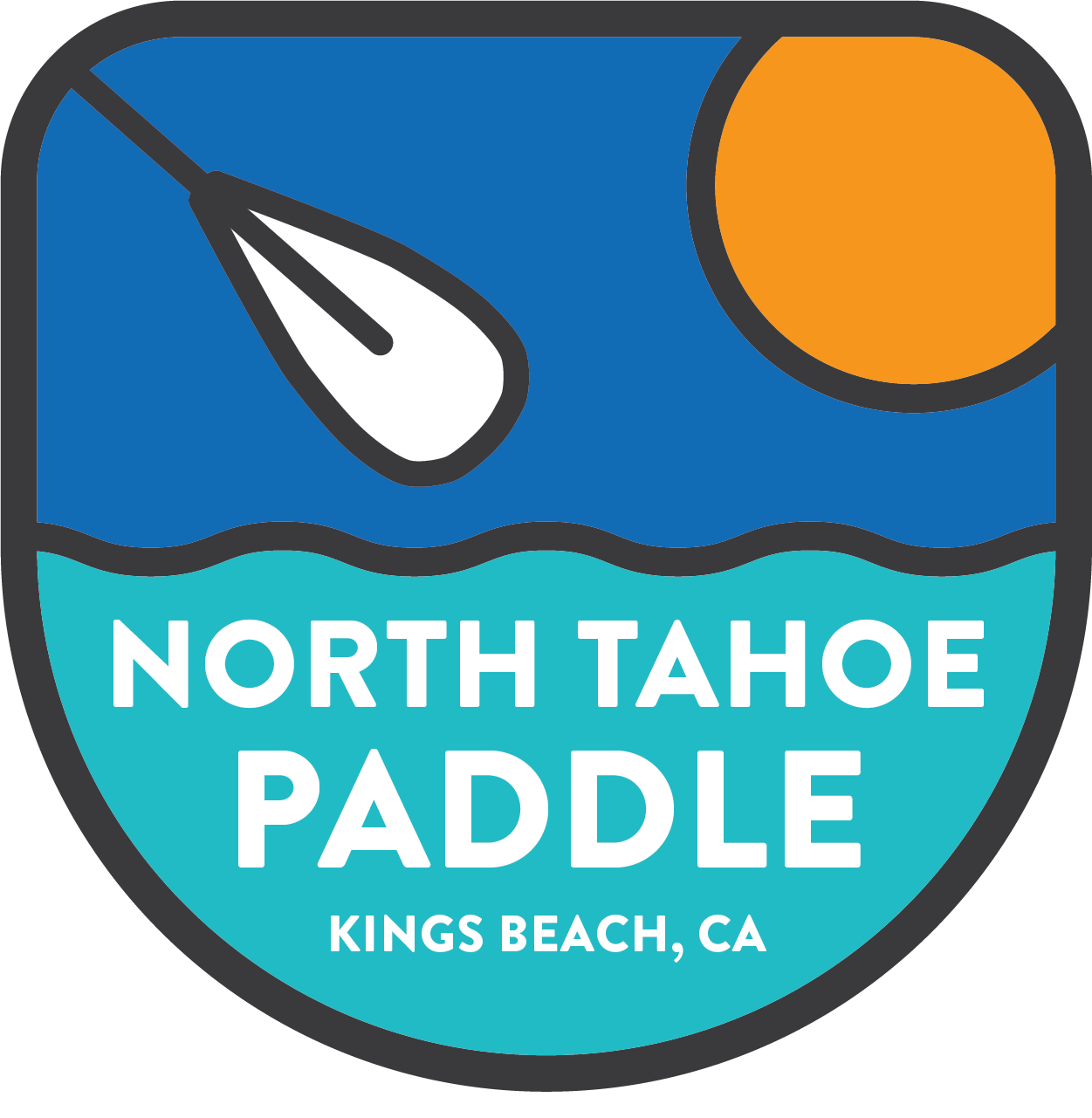Lake Tahoe Information & FAQs
Have questions about Lake Tahoe or just looking for more information about the area? Read through our Lake Tahoe FAQs for additional information regarding Lake Tahoe's location, size, elevation, recreational activities, water temperature, and much more.
Where is Lake Tahoe?
Lake Tahoe is located directly on the California/Nevada state line in the Sierra Nevada mountain range. By car, Lake Tahoe is approximately 200 miles northeast of San Francisco, 100 miles northeast of Sacramento, and 50 miles southwest of Reno, Nevada. The counties surrounding Lake Tahoe are Placer and El Dorado Counties of California and Washoe, Carson City, and Douglas Counties of Nevada.
What is there to do in Lake Tahoe?
Lake Tahoe is a recreational hub and outdoor enthusiast’s dream. Summer activities include water sports (kayaking, stand up paddle boarding, swimming, boating, jet skiing, parasailing, rafting, etc.), fishing, golfing (and frisbee golf!), and hundreds of miles of trails for hiking and biking. During the winter season, visitors from all over the world travel to Lake Tahoe to experience the likes of snowmobiling, snowshoeing, and downhill skiing and snowboarding at Lake Tahoe’s twelve major ski resorts. Lake Tahoe is also home to a variety of casinos, restaurants, bars, and breweries, making it a wonderful destination for vacationers seeking a combination of daytime recreational activities and nightlife.
How deep is Lake Tahoe?
Lake Tahoe is 1,645 feet deep at its deepest point, making it the second deepest lake in the United States to Crater Lake in Oregon, which is 1,950 feet deep. Lake Tahoe has an average depth of approximately 1,000 feet.
How big is Lake Tahoe?
Lake Tahoe is 22 miles long and 12 miles wide, with its surface area covering about 191 square miles. Lake Tahoe contains over 37 trillion gallons of water. If drained, the water in Lake Tahoe would cover a flat area the size of California with 14 inches of water!
Can you swim in Lake Tahoe? And how cold is Lake Tahoe?
Because it's so large, the deepest waters of Lake Tahoe stay at a constant 39° Fahrenheit year-round. However, during the warmer summer months of July, August, and September, the shallower areas around the shoreline of the lake can warm to 68°-70° Fahrenheit, providing a wonderfully refreshing temperature for swimming and cooling off on hot summer days. In the winter, however, swimming in Lake Tahoe is not recommended, as surface temperatures during the colder winter months plummet to the low 40°s, potentially causing cold water shock, swim failure, hypothermia, or drowning.
How long does it take to drive around Lake Tahoe?
The 72-mile drive around Lake Tahoe takes about three hours to complete with regular traffic and minimal stops. For most people, however, driving around Lake Tahoe is a once-in-a-lifetime experience, so it’s best to take your time, stopping periodically to take in the views and snap a few photos. The drive is filled with popular stops including the iconic white sand beaches and boulders of Sand Harbor just south of Incline Village, breath-taking views of the crystal clear waters along Lake Tahoe’s East Shore, and elevated vista points above world-famous Emerald Bay. In bustling South Lake Tahoe, you’ll find an array of casinos, restaurants, shopping, and nightlife. Along Lake Tahoe’s north shore, you’ll drive through several quaint mountain towns filled with small hotels, local businesses, and casual dining.
What is the elevation of Lake Tahoe?
The surface of Lake Tahoe sits at an elevation of 6,225 feet above sea level.
How was Lake Tahoe formed?
About 25 million years ago, as the surrounding mountains (the Sierra Nevada and the Carson Range) were forming by a process called uplifting, the valley that became known as the Lake Tahoe Basin sank between the two parallel faults. Lava flowing from Mt. Pluto on Lake Tahoe’s north shore formed a barrier across the basin’s single outlet point, what is now known as the Truckee River. Water from snowfall filled the various streams that flowed into the basin, gradually creating a lake several hundred feet higher than present-day Lake Tahoe. Eventually, water from the lake eroded the lava dam, creating the present path of the Lower Truckee River. Following this period, an Ice Age developed, reshaping the landscape of the Lake Tahoe Basin. Giant glaciers formed, moving down the narrow, V-shaped canyons on the Western side of the lake, scouring away loose rock and shaping the canyons into U-shaped valleys. As these glaciers melted away, they left behind brilliant bays, jagged peaks, polished ridgelines, and crystal clear lakes.
Are there sharks in Lake Tahoe?
No, there are no sharks in Lake Tahoe.
